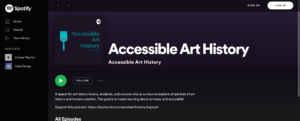We get asked for our emails so much now and I think 99% of the time we expect to be sold to, but in this post, I want to share with you 7 tips to help you sell history products in your emails without feeling pushy.
Sharing your email is still super-personal
I believe the act of sharing their email with you is still much more than liking, following, or even clicking subscribe. It’s someone saying ‘hey, I like this stuff too’ or even ‘I like you’ and I want more blog posts from you sent to my inbox that I check several times a day.
Now, sometimes I know, because I do it, the emails you send will be because they signed up for a freebie. This is slightly different as although people consented to get emails from you it wasn’t the main reason they filled the form in. Here, the tone and quality of your emails are even more important. You have to use your follow-up emails to show you and your great history stuff to stop them from hitting the unsubscribe button. They’re more likely to do this if they feel a hard sell.
But, they signed up for history posts, not an ‘I Love History” Travel Mug right?
Perhaps it’s because emails are more personal and we think people signed up for history blog posts, not an ‘I love History’ T-shirt or Travel Mug, that when it comes to selling our books, products, designs, and tour guide services we shrink a bit and it all feels a bit well yucky and uncomfortable.
Here’s how you can change that…

The seven tips to make ‘selling’ in your emails feel less awful
ONE: Reframe what your emails are for
How do you pitch your sign-up on social media or your blog? Is it warm, welcoming, and enticing?
The primary purpose of getting someone’s email is about making connections with like-minded history lovers like you.
Most email marketing advice is about sharing tips or hacks and I understand sometimes that’s not what history blogging is about. But, what it gives us is an alternative to not be dull and corporate? What’s wrong with:
‘I would love to connect with you so please join me as I blog my way through all the scandals and dramas of Tudor England.’ (followed by a quick and painless sign-up process)
TWO: Make it email nurturing not email marketing
The word marketing is a scary turn-off sometimes. So let’s think about connections again.
Write your email like you’re talking to one person even if you have 50+ on your list.
Sandwich your emails where you do ask someone to look at your new product with a new resource, advice, anecdote, or story about a trip or discovery.
The middle section of your email sandwich is where you ‘sell’ by writing enthusiastically about why you’re promoting it? Why you made it? How it will help or interest someone like it has you? The fun you had making it? Maybe include a clickable picture? Then accompany this with an easy-to-see button or link on a separate line.
THREE: Use authentic titles and intros
If there’s one thing that will undo all your hard work to make a connection it’s auto responses. By this I mean
Hi {insert name}
How are you doing {insert name}?
It’s good in theory but personally, I always feel like ‘you don’t actually know me so why are you using my name like this?’ and if there’s a typo on the form they fill in or they use forename and surname, well it just looks weird and inauthentic.
Titles are another tricky one.
We’ve all fallen for clickbait. The golden rule is the title should not be misleading or mismatched with the actual content. Experiment with your titles. Look at your own emails and see what you open. Look at podcasts and learn how from a 1.5-hour episode they can pitch it in one line.
I would advise you definitely avoid clinical things like ‘Newsletter 55: March’. Try to be a friend having a chat, not a marketer giving an update. For example, which email are you most likely to open?
- ‘The latest update on my book’ or
- ‘Manuscript Corrupted!’ 3 ways that stopped me from losing my sh*t.‘
Related Link: Want irresistibly clickable posts? Try these 6 types of history blog post titles
FOUR: Don’t make your emails all about you
We’re a history lovin’ community right! So, use your emails to recommend something relatable but outside of yourself. It could be someone else’s blog post, book, Etsy shop, or podcast. And genuinely ask for feedback or chats at the end. (And reply to everyone)
FIVE: Be spontaneous
Research shows people can tune out if you stick to a schedule like emails on Mondays and Thursdays. So mix it up a bit and draw people in with your enthusiasm “I watched this last night and just had to share….”
SIX: Do a flash sale to sell history products
This may sound odd if you’ve read 1 – 5 but if your other emails are more personal, considered, and about making connections then a once a month email dedicated to offering discounts on products they’ve already heard about will land better and less yucky. If you can pitch your offers exclusively to people on your email list as a ‘thank you’ then even better.
SEVEN: Create an email signature
It’s simple but effective. At the end of each email have your picture, other places to connect with you, and links to your products or shop. It’s just sat there. No pushing just easily accessible.
Email can be a really powerful tool but it doesn’t have to be corporate, cold, and pushy. I hope these tips show whilst there is nothing wrong with using emails to promote your products or services, it may fall flat to not do it in a chatty, warm way that makes valuable two-way connections.




